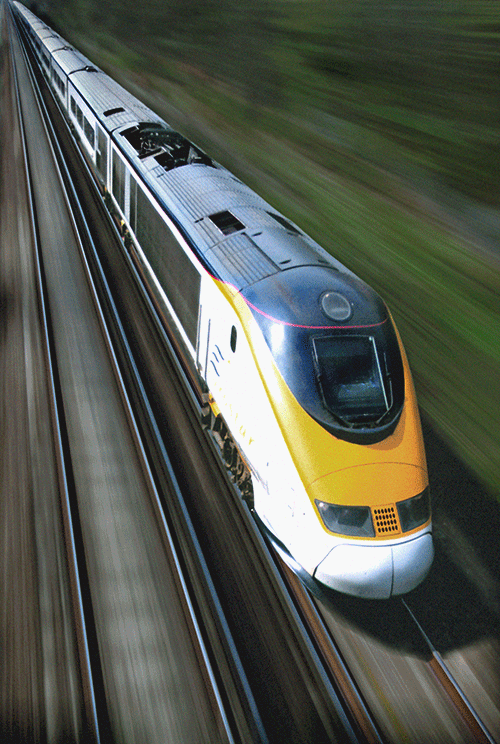 Read the peer reviews for this article
Read the peer reviews for this article
The UK’s decision to terminate its EU membership has initiated uncertain times for British politics, commerce, and its legal status and international relations. The enduring impact of the Brexit decision on each of these issues will depend on what terms the UK Government manages to negotiate on its withdrawal.
But what are the origins of the European influence on the UK rail sector? And how might the post-Brexit models affect stakeholders?
HOW IS IT GOING TO HAPPEN?
The outcome of the European referendum has imposed a democratic duty on the UK Government to terminate its membership of the EU, albeit it has not mandated the terms on which such termination is to be achieved. In order to trigger the withdrawal process, the UK will need to serve a formal notice under Article 50 of the Lisbon Treaty, although there is currently disagreement between constitutional lawyers as to whether parliamentary approval is needed in order for this to happen. A legal challenge is currently pending and due to be decided by the High Court in the coming months.
Once the UK serves notice to exit the EU it will have two years in which to agree arrangements for its future trade relations with members of the single market, unless an extension is agreed. If it fails to reach agreement within that period the UK could find itself forced into a ‘Full-Brexit’ (a position explained further below).
TWO POSSIBLE OUTCOMES
A number of options exist for the future relationship between a post-Brexit UK and the remaining EU member states. In this article, we assess the impact of a Brexit by reference to two options which are both realistic possible outcomes, at opposite ends of the spectrum.
These are: Partial Brexit, where Britain retains membership of the single market; and Full Brexit, where Britain ceases to be a member of the single market and relies instead on relationships governed by membership of the World Trade Organisation (WTO).
Under a Partial Brexit, currently exemplified by arrangements applying to Norway, Iceland and Liechtenstein, the UK would:
- Retain full membership of the single market - and be required to comply with single market rules, including the free movement of capital, labour, services and goods (the Four Freedoms).
- Be a member of the European Free Trade Area (EFTA) and - under the terms of the EEA Agreement - the European Economic Area (EEA).
- Be outside the EU customs union, but be able to enjoy tariff-free EU/UK trade in goods within scope.
- Have limited formal power in making EU single market rules.
- Pay (at a reduced rate) for access to the single market.
This option would require compliance with each EU Directive and Regulation that has been adopted under the EEA Agreement. There is a process leading to adoption under the EEA Agreement - this is triggered by the EU law concerned being adjudged to be relevant to the subject matter of the EEA Agreement (or ‘EEA relevant’). Although there is often some delay in the adoption, and there is a rarely-used process for exceptions to adoption, most EU laws deemed to be EEA relevant have been adopted and EEA relevance has been widely interpreted.
In the rail industry, each directive previously transposed into English law has been deemed to be ‘EEA relevant’. For this reason, a Partial Brexit can largely be considered to be the maintenance of the status quo, and (unless expressly stated below) we would expect the UK rail industry’s legal framework to remain largely unchanged.
However, there are a number of hurdles which the UK would need to overcome to achieve a Partial Brexit. These include being able to: (a) negotiate acceptable withdrawal terms with the remaining EU States within the two-year period; and (b) obtain the memberships it requires to maintain access to the single market. Indeed, reports currently suggest that Norway may block any attempt by the UK to rejoin the EFTA over fears that the UK could shift the balance of the organisation (The Guardian, August 9).
If the UK pursues a Full Brexit approach:
- It would fall back to trade relationships governed by membership of the WTO and bilateral trade treaties (BITs), although it would need to accede to some of these agreements.
- Exports to the EU would be subject to the EU’s common external tariff. Imports would attract whatever tariffs the UK imposes.
- Trade between the UK and the EU would be governed by the General Agreement on Tariffs and Trade (GATT), and trade in services by the General Agreement on Trade in Services (GATS). Again, this is subject to accession.
- The UK would need to comply with EU product standards for exports to the EU.
The UK would be forced to implement a Full Brexit if, as some are predicting, the two-year negotiation period (triggered by the service of notice under Article 50) expires without: (a) a withdrawal agreement being finalised; or (b) an extension to the negotiation period being unanimously agreed by the 27 Member States.
As Philip Hammond, the then Secretary of State for Foreign and Commonwealth Affairs, stated: “This would lead to the UK leaving the EU with no immediate replacement agreed, without any protection under EU law for the rights of UK business to trade on a preferential basis with Europe or the EU’s free trade agreement partners, UK citizens to live and work in Europe, or UK travellers to move about freely in Europe.” (The Process for withdrawing from the European Union, presented to Parliament in February 2016.)
The key differences between the two models are the level and terms of access the UK would have to the single market in return for allowing the largely unrestricted operation of each of the Four Freedoms, as well as significant budgetary contributions. European leaders have been quick to assert that one cannot enjoy full membership of the single market without accepting the latter, and that the UK will be prevented from having ‘single market a la carte’.
Origins of European influence and the status of existing legislation
The UK rail market is regulated by a combination of EU and domestic laws which are given primacy over domestic legislation by the European Communities Act 1972 (ECA 1972). Two important features of EU law are Regulations and Directives, each split between ‘vertical’ legislation (applying directly to a particular sector) and ‘horizontal’ (affecting multiple sectors).
Regulations are binding on the UK from the date specified within them, and so are automatically effective without the UK being required to enact its own legislation. There are currently 12 Regulations applying directly to the rail sector.
Directives set out a goal that all EU countries must achieve, and are implemented domestically through the introduction of domestic legislation. There are currently nine rail-specific pieces of such legislation in force in the UK. There are also a large number of horizontal Regulations and Directives which affect many aspects of the industry.
On leaving the EU, domestic legislation made to implement Directives would remain in effect, but Regulations (unless Government acts to the contrary) would cease to bind the UK.
A Partial Brexit would largely preserve the existing arrangements, so it is likely that Government would act to adopt the Regulations which would otherwise cease to have effect. On a full Brexit, Government may be content to let Regulations cease to be effective and to take steps to repeal domestic legislation, but it will need to consider what is to fill the void.
Europe’s growing influence in the UK’s rail industry is most clearly seen in the regulatory framework introduced piecemeal by the four EU Railway Packages. In the UK, these packages were subject to phased implementation largely via secondary legislation, and involved:
- Opening the rail freight market; setting out the framework for the relationships between State, infrastructure manager and operators; introducing licensing conditions for freight; and a defined policy for capacity allocation and infrastructure charging (the First Railway Package).
- Establishing a framework for the legal and technical integration of the European rail network (interoperability, the Second Railway Package).
- Opening up international passenger services to competition within the EU and enshrining passenger rights (the Third Railway Package).
- Simplifying and consolidating clear rules for the funding and management of infrastructure, access to rail-related facilities and independence and competence of regulatory bodies (the re-cast of the First Railway Package).
Legislation yet to be implemented
The Fourth Railway Package is in the process of being implemented, with the objective of:
- Simplifying certification procedures across the EU (the technical pillar).
- Opening of domestic rail passenger markets in Member States and the strengthening of the independence of rail infrastructure managers to ensure effective and non-discriminatory access to infrastructure (the market pillar).
The technical pillar comprises two Directives and a Regulation which came into force on May 11 2016. The market pillar comprises two Regulations and a Directive, on which provisional agreement was reached between the European Commission (the Commission), EU Parliament and Council on April 19 2016, and which are expected to come into force later this year.
Common commercial considerations
There is uncertainty surrounding existing contractual obligations. For those with existing contracts in the UK, or with UK entities, a Brexit raises a number of issues, including:
- Foreign Currency risk - for cross-border contracts, risk for foreign currency fluctuations are often allocated. There may also be connected rights to negotiate changes or even terminate.
- Change in law - many commercial contracts will refer to European legislation and allocate responsibility for any additional costs incurred in complying with any changes to those laws. The Full Brexit could lead to the introduction of new legislation and so this could be a real consideration.
Of particular interest in the rail industry would be whether the ‘Change in Law’ provisions in franchise agreements would be invoked. Franchisees are typically required to take responsibility for: (a) non-discriminatory changes in Law (those of general impact and not specific to the rail industry); and (b) discriminatory changes in Law (those which are specific to the rail industry), which are foreseeable at the date of signature. As a result, those entering into new contracts need to consider what contractual protection regarding the impact of Brexit is required.
- Interim Review - under many track access arrangements for passenger services, the Office of Rail and Road is entitled to carry out an access charges review where it considers that there has been, or is likely to be, a ‘material change… in relevant financial markets’.
State Aid
State Aid is an area of law peculiar to the EU and its trading partners. It is enforced by the Commission and prohibits unfair subsidies to businesses on the grounds that they distort trade between Member States. Most recently it has been in the news as the Commission’s tool for challenging (among others) Apple’s tax affairs in Ireland. Under a Partial Brexit, the State Aid restrictions would continue to bind the UK, although the enforcement authority is likely to be a domestic body instead of the Commission.
While a Full Brexit might give the UK greater flexibility in supporting domestic industry such as rolling stock manufacturers, as a party to the WTO treaties the UK would be subject to restrictions in those treaties (analogous to the State Aid regime), which would limit the UK’s ability to subsidise UK industry.
Competition Law
The impact of EU-inspired Competition law on the rail industry is seen most often in the context of rail franchise competitions.
For example, the Competition and Markets Authority (CMA) recently announced that it was carrying out an in-depth investigation into Arriva’s integration with Northern. A trade deal that did not tie the UK to the European competition regime would, in theory, give the UK the opportunity to make significant changes to domestic competition law. However, as we explain below, it seems unlikely that it would do so.
Competition law and its cousin (merger control) now exist in more than 100 countries, including all members of the Organisation for Economic Co-operation and Development (OECD).
It is unlikely that a post-Brexit UK would not have some form of competition law and merger control, and the competition law model of choice for international legislators has been that of the EU (rather than the US).
Further, the Commission is a highly respected competition authority and its views on behavioural competition law and merger control are taken into account by various foreign competition authorities. While the CMA may no longer be compelled to draw the same conclusions as the Commission in a post-Brexit scenario, in most cases it is likely to be persuaded by them.
Procurement
UK public procurement law is based on EU Directives, which give effect to the EU principles of freedom of movement of goods and the freedom to provide services. These requirements have not only opened the UK market to foreign competition, they have also presented significant opportunities for UK operators seeking to expand their operations in EU countries.
The requirements of EU procurement law are reflected not only in the UK’s general public procurement legislation, but also in rail- specific legislation such as the Railways Act 1993 and a swathe of subsequent rail regulations.
In a Full Brexit scenario, the UK would (subject to possible competition and state aid considerations) be able to decide what changes it wishes to make to its domestic procurement law, including its rail legislation. However, there is general (albeit not unanimous) political consensus around the need for competitive procurement, and with legislative resources stretched it is hard, at the moment, to envisage a strong desire to change the procurement regime significantly.
Furthermore, the ‘no regulation’ approach is unlikely to come to pass in relation to rail, not least due to the current Government’s desire to encourage foreign investment in the industry. The average number of bids the DfT receives for franchise competitions has reduced from four to three since 2013, and both the West Midlands and South Western franchises have only two bidders at the final stage.
A recent report by the Public Accounts Committee stated that there is a “real risk to value for money if market interest in operating rail franchises declines any further”, and retaining this openness to EU bidders is more likely to facilitate an agreement that enables UK bidders to compete for EU rail contracts. It seems unlikely, therefore, that the UK Government would opt to restrict or significantly alter the basis of competition for UK rail franchises.
It does not follow, however, that there will be no change - depending on the political will, there might be a desire to tinker with other current procurement restrictions. For example, a revision to restrictions on vertical integration is possible, and this could assist the creation of a vertically integrated rail infrastructure, building on the recent moves to regionalise Network Rail and its associated ORR regulation. Such a change would seem increasingly likely in the event of the Labour party winning the next General Election, with both Jeremy Corbyn and Owen Smith advocates for renationalising the railway.
Cross-border issues
Post-Brexit, both the Channel Tunnel and the border between Northern Ireland and the Republic of Ireland will become an external border of the European Union.
The Channel Tunnel was established under the terms of the 1986 Treaty of Canterbury between the British and French Governments, and is overseen by the Channel Tunnel Group (appointed under the terms of a 100-year concession contract). Both agreements operate on an international legal basis, so are independent of the UK’s EU membership.
Border controls are already in place in France and the UK, by virtue of the UK not being a part of the Schengen area. However, special arrangements (‘juxtaposed controls’) exist for passengers and vehicles travelling by train to and from France and Belgium.
In 1994, the Sangatte Protocol enabled British border force officers to carry out passport checks in France and Belgium for Eurotunnel users. This was subsequently extended to Eurostar passengers in 2001, following the agreement of an additional protocol. This has enabled the UK to carry out its rail-related immigration control and customs checks from within French territory.
Although not inextricably linked to the UK’s membership of the EU, recent reports suggest that certain French politicians may not be in favour of retaining these arrangements following Brexit. This poses potentially significant risks to the operation of services through the Tunnel, as well as to wider border control.
There are huge political sensitivities surrounding the imposition of border controls between Northern Ireland and the Republic of Ireland.
Any border controls would affect the train service that runs from Dublin to Belfast. It would be easier to maintain the status quo if a Partial Brexit is negotiated (as free movement of goods and labour would continue). A Full Brexit, however, would be more likely to result in some form of passport and customs check being required at the border. This would increase costs for all railway operators, and thus passengers and freight hauliers, while having a negative impact on cross-border rail journey times.
Another potential implication of Brexit is a second Scottish referendum on independence. While the occurrence and outcome of this is far from certain, it is worth considering how Scottish Independence could affect the UK rail industry.
The ScotRail franchise, which covers most of the internal services in Scotland, is let by Transport Scotland. The network itself is managed by Network Rail, and it is unclear whether the Scottish element of NR would be hived off so that the Scottish Government had control of all rail infrastructure in Scotland.
Route separation and the requirement for separate Scottish financial information means that Network Rail already has a distinct Scottish operation. This could make severability easier, although many issues remain far from clear, such as how Network Rail’s debt might be attributed between the two entities.
From a regulatory perspective, the ORR is currently the economic regulator for the UK railway network, but an independent Scotland would need to establish its own approach to economic regulation.
If a separate self-contained Scottish rail regulator was created, this would have particularly significant consequences for cross-border services. Train companies running Anglo-Scottish services may have to deal with two regulators and two sets of regulatory standards governing their services. This includes franchises let by the DfT such as East Coast, TransPennine and CrossCountry, as well as the ScotRail franchise which operates services to Carlisle. Ultimately, the increased costs of regulatory compliance would be passed on either to passengers or the taxpayer on both sides of the border.
If Scotland retained its membership of the EU (which is a likely motivation for seeking independence), it is also possible that passport checks would be required at the border. As noted above, this would increase both costs and journey times. There are currently eight million journeys across the Anglo-Scottish border every year.
The cross-border implications for rail following Brexit are significant, even if they are potentially more manageable when compared with other forms of transport (due to the defined nature of routes and smaller traffic volume). The resulting outcomes, however, will be heavily dependent on the political environment.
Taxation
Taxation will have implications for rolling stock manufacturers, maintainers and hauliers who depend on international goods. The UK tax position will remain the same until the UK actually leaves the EU, and the post-EU tax position will depend upon what is negotiated as part of the exit deal.
If the UK does not manage to negotiate a free trade agreement with the EU, under which goods may be imported from the EU to the UK without customs duty, the arrival of goods into the UK from EU countries should trigger the payment of import duties. This is because the UK reverts to WTO rules if no agreement is reached, and as a consequence the movement of goods from the EU to the UK would be treated as an import. The amount of import duty would depend upon the goods being brought into the UK.
Whatever deal is reached between the UK and the EU, it is likely that the UK will keep a system of VAT in place. As a consequence, it is likely that there would be “import” VAT imposed when goods arrive in the UK from EU countries (the VAT is at standard rate, which is currently 20%). Import VAT is currently due on goods that arrive from outside the EU.
Any ‘import’ VAT is likely to be recoverable (if the importer is registered for VAT in the UK, or under a system comparable to the ‘13th Directive’ reclaim, where recovery is allowed if the jurisdiction of the supplier has a system of VAT and that system allows recovery for UK businesses on a similar basis). However, even if recovery is allowed there would be a cash-flow cost, as import VAT is payable before it can be recovered.
Funding
The issue of foreign investment in a post-Brexit Britain is one that is the subject of much discussion.
In the rail industry, EU grant funding of major capital projects was in the region of £100 million over the last five years. This has included a number of infrastructure developments related to the Trans-European Network - Transport (TEN-T) initiative. A number of these projects may not be completed until after the UK withdraws from the EU, and a question mark therefore remains over their status and whether repayment may be required.
In particular, this uncertainty may be felt by the rail freight industry, since several key projects (such as the development of improved links to the Port of Felixstowe) have relied in part on European grants. In addition (as noted in the ‘Freight Network’ section below), the UK Government’s challenge to the Commission’s extension of the European Rail Freight Corridor may also have an impact on projects related to the development of the Strategic Freight Network.
While such projects could still be within its remit, the European Investment Bank has expressed its concern over the continued viability of some UK projects in which it was intending to invest. Most notable of these is HS2. It remains to be seen whether any form of Brexit will ultimately have an impact on the Bank’s willingness to lend to them.
The fall in the value of the Pound has made the UK a cheaper proposition for overseas investors, which may counteract some of the potential downturn in commercial activity.
In relation to rolling stock finance, the Luxembourg Protocol creates a global legal framework which will recognise and regulate security interests over such assets. The Protocol is expected to come into force later in 2016, following a consultation period. The UK’s accession to the Protocol is independent of its membership of the EU, and will therefore not be directly affected by a Full Brexit.
Rail-specific Issues
Role and duties of ORR
Key functions bestowed upon the ORR by statutes derived from European Directives include its role as administrator of the track access charging regime, national licensing authority and national safety authority.
In parallel, those same directives have imposed upon the ORR an increasing array of activities, including the exchange of information with the national regulatory bodies of other Member States and notifications to the European Union Agency for Railways (EUAR) on the issuing, amendment or revocation of a safety certificate or safety authorisations.
Following a Full Brexit, there would be increased flexibility to alter the role of the ORR and, in turn, the access charging, safety and licensing regimes (each discussed in further detail below). That said, we would expect to see continued engagement with the EUAR outside of EU membership, involving at the very least a process whereby new European regulations are considered by the ORR for replication in UK legislation.
One of the benefits to be gained in maintaining these links is that EUAR bears the costs and obligations of undertaking the determination of standards, thereby reducing the burden on the ORR. In addition, the sharing of information and international recognition of the charging, licensing and safety regimes in the UK is an important factor in preserving the UK as a safe, attractive and competitive market.
That said, a Full Brexit would afford the ORR a greater degree of autonomy in relation to applying and interpreting international standards and structures. This will enable more focused tailoring of regulation to fit the realities of the UK market, rather than being required to apply a one-size-fits-all model, which we anticipate would be a likely consequence in the medium to long term. In particular, this is likely to occur where the Commission or the EUAR would be the ultimate decision-maker.
Access Charging
The ORR sets the framework for track access charges levied by Network Rail, and it must ensure that they are consistent with EU law.
Current EU rules, recently enacted in the UK via the Railways (Access, Management and Licensing of Railway Undertakings) Regulations 2016, require track access charges to be set on the basis of direct/marginal costs, which must be “the cost that is directly incurred as a result of operating the train service”. EU rules also provide that access charges for different railway undertakings that perform services of an equivalent nature must be equivalent and non-discriminatory.
Following a Full Brexit, in the absence of a bilateral agreement requiring adherence to EU requirements, the ORR could seek to modify the regulations applying to access charges and there could be greater scope for creativity in setting open access charges.
While, in general we would expect the Government to continue to require the application of non-discriminatory principles, it is possible that it may wish to apply greater flexibility in certain cases (for example, freight).
A recent report by the CMA recommended that access charges should reflect the opportunity costs of infrastructure, to allow scarcity to be reflected in the allocation of train paths. There is a growing desire to reform access charges, and a Brexit on terms that do not require adherence to the EU restrictions may give greater freedom to do so.
As previously noted, the ORR could instigate an Interim Review of access charges if economic conditions create a “material change in Network Rail’s circumstances” affecting its ability to deliver its PR13 output.
Infrastructure Management
Since September 2014 Network Rail has been classified as a public sector entity, following guidance issued in Eurostat’s European System of Accounts. Partial Brexit would probably not change the UK’s adoption of the Eurostat principles, but Full Brexit might. This could help facilitate changes to the status and management of Network Rail and its ability to borrow.
The Market Pillar of the Fourth Railway Package is designed to ensure that there is sufficient independence between state-owned entities such as infrastructure managers, by restricting vertical integration. This means that a body cannot manage rail infrastructure or be part of its management and at the same time directly or indirectly control a railway undertaking.
The UK market is more open than many of its European counterparts, with separation between infrastructure managers and train operators firmly established. As such, the impact of the Market Pillar is not as significant as it may be in other countries.
However, there remains some debate as to whether these requirements might prevent the alliancing - in particular the ‘Deep Alliancing’ - that Network Rail has engaged in with some train operators. A Full Brexit may therefore offer the UK the opportunity to tailor these components of the sector. This would appear to be particularly relevant in the light of recent devolutionary initiatives (to regional infrastructure managers) and the recommendations of the Shaw Report.
Network Rail is a member of the European Network of Infrastructure Managers, and sits on the Policy and Management Committee and the Technical Steering Group. These roles enable NR to seek to exert influence on policy, management and technical matters at a European level. Network Rail also acts as the UK’s ‘one stop shop’ for various purposes, including securing access rights in more than one member state. Its role in these capacities following a Full Brexit would need to be reviewed.
Franchise bidding
The relationship that emerges following Brexit negotiations will determine whether UK rail operators will be able to participate in tenders for rail services in the EU and equally whether European operators will be able to bid for future UK rail franchises.
The WTO Agreement on Government Procurement (GPA) aims to liberalise the government procurement markets of contracting states, and guarantee fair and non-discriminatory conditions for international competitive tendering. The UK is currently a party to this agreement through its membership of the EU. Following Full Brexit (and possibly Partial Brexit) the UK is likely to want to become a contracting party in its own right, to allow businesses access to procurement markets of GPA contracting states.
The UK’s liberalised rail market currently allows EU transport companies (via UK subsidiaries) to operate rail franchises in the UK. For example, Arriva Trains, which is owned by Deutsche Bahn, runs Chiltern Railways, Arriva Trains Wales and the London Overground among others.
The EU has strongly advocated the liberalisation of domestic rail passenger services and increased competition to create a single European rail area. Under the Fourth Railway Package, European train operators will have non-discriminatory access to operate passenger services in EU countries, either by competing commercially with other operators or by bidding for public service contracts (which includes rail passenger services).
The liberalisation of the European rail system presents significant opportunities for UK operators seeking to expand their operations. For example, while in Germany the state-owned Deutsche Bahn operates all inter-city rail services, 14% of German regional lines are being put out to tender over the next few years.
This has already paid dividends for UK operators. National Express was awarded contracts to operate Germany’s Rhein-Münsterland-Express and the Rhein-Wupper-Bahn in 2013, while Go-Ahead was recently appointed to operate two lots on the Baden-Wurttemberg rail network. Both companies have recently opened offices in Düsseldorf and Berlin respectively, in order to manage these existing operations and to further capitalise on these opportunities.
It is likely the UK would seek to ensure that UK companies could continue to compete in these markets after Brexit (although they would have to comply with the relevant EU regulatory and safety requirements). Reciprocity would be a bargaining tool for the UK, given the current participation of EU transport companies in the UK.
Theoretically, in the event of a Full Brexit, the UK could restrict EU transport companies bidding for UK rail franchises. However, with historically low numbers of bidders competing for the UK’s rail franchises, it is unlikely that the UK Government would opt to restrict the market in this way. Any restrictions would also be likely to have repercussions for UK transport companies operating within the EU.
Freight Network
The formal opening of the UK section of the European Rail Freight Corridor (ERFC) is scheduled for November 2016. This will complete the ‘North Sea-Mediterranean’ corridor, facilitating a continuous rail freight connection between the UK and continental Europe via the Channel Tunnel.
Initially, the corridor ran from Folkestone (via the Channel Tunnel) to Wembley in north London. A further extension was added by Regulation 1316/2013 north along the West Coast Main Line to Glasgow, although it was subject to an unsuccessful challenge by the Government, which argued that the Commission lacked the competence to make such decisions.
This initiative is part of the UK’s TEN-T commitments, intended to streamline the flow of multimodal freight across Europe. TEN-T policy was adopted following a decision of the Commission, tieing the UK’s commitment to its membership of the EU.
A Full Brexit will cast doubt over the future shape of the ERFC, as it is highly probable that European funding for TEN-T related projects will be withdrawn and (as with other EU Regulations) the underpinning legislation will cease to be directly applicable. In addition, the UK Government’s decision to mount a legal challenge to the extension of the ERFC is perhaps indicative of a willingness to avoid committing to European elements of the freight corridors.
A balance will also need to be struck with the trade opportunities offered by increased freight traffic through the TEN-T network, which should incentivise ways to be found to continue investment.
As an example, analysis carried out on behalf of Network Rail (European Rail Freight Corridor Linking UK and Continental Europe, August 2012) estimates that the potential ‘through-rail’ freight market using the ERFC could be between 3.1 million and 12 million tonnes of rail freight per year, a significant increase from the current 1.3 million tonnes. However, the long-term efficacy of these arrangements will remain subject to the approach to import tariffs and border controls.
On the regulatory side, amendments have already been made to the Network Code to accommodate the ERFC initiative. These include:
- Safeguarded time slots for international freight services.
- The creation of a ‘One Stop Shop’ in the UK, providing a single point of contact for network access to international path requests and performance review.
In the event of a Full Brexit, it is likely that the majority of existing UK-enacted EU-derived legislation would remain in place, subject to tailoring where the UK market presents particular challenges. The extension to the ERFC may be brought into question, but otherwise we would not expect the Government to make any changes to freight-specific legislation in the short-to-medium term. There are tangible benefits to trade and the incentives to trans-modal opportunities offered by the TEN-T initiative.
Safety and Interoperability
The UK railway safety regime is currently governed by the Railway Safety Directive 2004/49, as implemented in the UK by the Railways and Other Guided Transport System (Safety) Regulations 2006 (ROGS). These regulations set out the framework for operators to maintain a Safety Management System and hold a Safety Certificate, and for infrastructure managers to hold a safety authorisation.
They require, among other things, that Safety Management Systems achieve Common Safety Targets (CSTs), apply relevant parts of Common Safety Methods (CSMs), and conform with Technical Specifications for Interoperability (TSIs).
To a large extent the ROGS regulations provide a standalone framework that can survive and remain applicable after exiting the EU regardless of whether or not the UK remains within the single market. However, all of the CSMs, CSTs and TSIs are managed according to processes that operate at EU level. In the case of the TSIs they are created and managed by the EUAR.
If a Full Brexit were to apply, it would need to be decided whether it is practicable and desirable for the UK regulations to continue to apply the CSTs and CSMs, even though the UK is no longer bound into the EU-level mechanisms that create and manage them. CSMs are provided for under EU Regulations, and there would no longer be a UK law to give them effect.
Similarly, the UK would need to decide whether to continue to apply existing TSIs and/or whether to adopt any future TSIs, recognising that it is unlikely to be a member of the EUAR and therefore will have limited ability to influence them.
Advantages of going it alone with respect to safety and technical standards would include enhanced flexibility and adaptation to local conditions. It might also be possible to drive out cost (in the short term at least), by removing requirements not suitable to UK rail.
Disadvantages would include the potential for UK standards to diverge from EU standards, thereby potentially reducing incentives for cross-border investment between the UK and EU rail markets.
It is worth remembering that ‘national safety rules’, which in the UK consist mainly of Railway Group Standards issued by the RSSB, are already provided for in the EU rail safety framework. So the UK is likely to have the institutional and technical capacity already in place to take the lead in setting its own standards in future, if TSIs are no longer applied.
There is a view that the UK often benefits from compliance with the TSIs by being able to take advantage of best international practice. This contributes to the safety and efficiency of the network, while ensuring that the market remains attractive for operators and manufacturers.
In any event, the UK sector is likely to retain at least some international links - for example, memberships of the Channel Tunnel Intergovernmental Commission and international rail organisations such as the Intergovernmental Organisation for International Carriage by Rail (OTIF).
For interoperability, the introduction of new and enhanced rail systems - whether rolling stock, infrastructure or other sub-systems - is currently governed in the UK by the Railways (Interoperability) Regulations 2011 (RIRs), which once again are entirely an implementation of European Law.
It is unlikely that RIRs could operate under the Full Brexit option without significant amendments to excise the role of the EU. Among other things, compliance with TSIs is necessary to obtain authorisation, so the points regarding the continuing application of TSIs are relevant. Additionally:
- The RIRs refer to national technical rules notified to the Commission in accordance with Directive 2007/58.
- The RIRs permit safety assessment reports prepared pursuant to a Regulation to be relied on, but this Regulation will no longer apply after exit.
- The Commission has a role in deciding whether derogations from TSIs are permitted.
The technical pillar of the Fourth Railway Package has now come into effect. As well as a new regulation on the role and functions of EUAR, it includes a new railway safety directive to recast the existing Directive 2004/49 on railway safety and a new interoperability directive that recasts the existing directive 2008/57/EC.
However, there is a three-year lead time on the requirement to fully implement the new interoperability and safety rules, and it therefore appears likely that they will never become effective in the UK if the Full Brexit model is adopted, unless there is a delay in the exit process.
Emissions
The Non-Road Mobile Machinery (Emission of Gaseous and Particulate Pollutants) Regulations 1999 (NRMMR) set emission standards for, among others, train engines.
The UK has one of the highest proportions of non-electrified lines in the EU. As a result it relies more heavily on diesel than many other member states. The NRMMR has prevented the continued manufacture and sale of several models of diesel train, which has affected the variety of trains available and could potentially increase cost.
In order to alleviate this burden and to reduce the cost of procuring new diesel rolling stock, the UK may, in the event that a Full Brexit is chosen, opt to derogate from the NRMMR. However, this seems unlikely, especially in the face of the UK’s COP21 commitments, which are likely to override the short-term considerations.
Passenger Rights
The contracts of carriage for the international carriage of passengers and goods (CIV and CIM) Uniform Rules were developed by OTIF to deal with the movement of passengers between countries. Broadly, they grant rights to passengers in the event of death, injury or loss or damage to luggage.
The Uniform Rules are contained in the Convention concerning International Carriage by Rail (COTIF), to which the UK acceded by way of the Railways (Convention on International Carriage by Rail) Regulations 2005. These rules were subsequently strengthened by the Rail Passengers’ Rights and Obligations Regulations 2010 and applied by COTIF to domestic travel, following implementation of Regulation 1371/2007.
The recent super-complaint by consumer rights group Which? has brought attention to the access of passengers to these rights following delayed or cancelled trains. The ORR in this case made recommendations to improve awareness and the ease by which passengers can claim compensation.
Continuing controversy surrounding the Southern franchise industrial action has increased public scrutiny of the topic. The UK Government will want to avoid any perceived dilution of end users’ rights. As a result, it is unlikely that a Full Brexit will bring about changes in EU-derived legislation in this area.
Drivers
The Train Driving Licences and Certificates Regulations 2010 (TDLCR) introduced a continental driver licensing and certification system designed to:
- Make it easier for cross-border rail services to operate.
- Create a more flexible labour market for train drivers.
- Introduce common standards of driver training across Europe.
- Increase public confidence in the rail system through the requirement for certain groups of train drivers to hold a licence.
To achieve this, the TDLCRs impose language requirements and basic training at levels set by decisions of the European Council, which are then administered by ORR.
In the event of a Full Brexit, we do not consider it likely that these enacting regulations will be repealed. However, the increased autonomy afforded to ORR in making new legislation and optional compliance with future EC decisions may lead to a tailored, UK-specific driver certification regime in the medium to long term.
Implementation of ERTMS
In 2007, the DfT published its National Implementation Plan (NIP) for Implementation of European Railway Traffic Management System (ERTMS), setting out the Government’s intention to roll out digital signalling across the UK over the next 35 years.
The NIP was submitted to the Commission to meet the requirements of the High Speed Control Command & Signalling TSI and the Conventional Control Command & Signalling TSI. As discussed, depending on the model adopted in the event of a Brexit, continued compliance with these TSIs may become optional for the UK, whichever model is negotiated.
The rollout of ERTMS is a key element of the Digital Railway, a project which is consistently recognised as the most efficient way to increase network capacity.
Given the forecast benefits of ERTMS rollout, it is unlikely that the UK would renege on its existing commitments or deviate in a material way from the TSIs specifications.
The ongoing concern, therefore, is likely to be that the UK will need to try and retain its position in continuing to influence the input into these baselines.

David and Keir offer a detailed discussion of the influence of European law in the UK. This continues post-referendum, with the introduction of the Railways (Access, Management and Licensing of Railway Undertakings) Regulations 2016 at the end of July this year, and the forthcoming Fourth Railway Package of legislation (assuming the UK does not leave the EU before the required implementation date).
The future very much depends on where the UK stands in a post-Brexit world. To what extent will the UK be required to implement European requirements as a condition of access to markets? Will Scotland remain part of the “united” Kingdom? To what extent will incentives be introduced to encourage investment? A lot depends upon the strategy for withdrawal from the EU, which (at the time of writing) continues to be the subject of considerable debate.
EU legislation
In addition to considering European law in detail, it is worth taking a step back and remembering a little history. The purpose of the majority of European railway legislation has been to liberalise European rail markets and open them to competition. The UK has long been a pioneer in railway liberalisation - the Railways Act 1993 introduced the concept of separation between infrastructure management and train operations, and pre-dates most EU rail legislation. Indeed, the UK’s influence in Europe has meant that much of what the EU has implemented has a distinct UK flavour.
Over time, EU requirements have developed, and in many cases have become more detailed - largely with a view to ensuring full separation and a level playing field for competition. In many cases, this is in response to reluctance from other EU Member States to comply with both the letter and spirit of existing legislation. While it is probably not possible simply to repeal all EU railways legislation applicable in the UK as soon as Brexit occurs, if the UK Government was to do so, the industry would not be considerably different from how it looks today.
Change in law and recession
There are more practical issues that will be of immediate concern to the industry, some of which are highlighted in the article. The risks associated with the law changing will be key - in particular, how these are allocated in contracts such as franchise agreements and rolling stock contracts.
From a broader perspective, however, what if Brexit leads (as widely predicted) to a recession, fewer jobs, lower passenger numbers and less revenue for operators? It is these sorts of practical issues that will be of immediate concern. Are there any protections available to mitigate the impact of any drop in revenue (for example, revenue share/support or GDP reset mechanisms)? Will ‘quality’ remain a key part of franchise bid assessment with the purse strings tightening? Will European rail operators want to continue to bid for UK-based franchises (and vice versa)?
Rail industry suppliers
Suppliers to the industry should not be forgotten. With the decline in the value of sterling following the referendum, suppliers operating in euros may become more expensive relative to their British competitors. There is also the possibility of tariffs or quotas between the UK and the EU in future, which could make suppliers less competitive still.
On the flip side, the Government has recently announced an upturn in manufacturing in the UK, as UK products become more competitive on the continent. Many UK-based suppliers to the EU rail industry may therefore see the weaker sterling as a benefit. Likewise, the UK has been selling its railways expertise and services overseas into areas such as the Middle East, Far East, America and Africa. A weaker sterling may make this more attractive.
Infrastructure
There may also be concern about whether infrastructure projects will go ahead or be slowed down, particularly if being publicly financed (although an efficient transport network will be required regardless of the UK’s role within the EU). This will have an impact not only on Network Rail (which is already subject to spending being moved into the next Control Period), but also on other infrastructure managers such as Transport for London. There must also be a question mark around ambitious plans for an integrated Wales and Borders franchise.
On the other hand, the Government may well take the opportunity to promote infrastructure spending to boost the economy - and in that case, the railway industry needs to be at the front of the queue setting out why such funds should be directed to it. Integrated concessions of passenger operations and infrastructure have always been possible under EU legislation, but perhaps may become easier if new EU legislation is not adopted (for example, the Fourth Railway Package).
Passenger rights
In relation to passenger rights, the Government has very recently decided to bring all railway operators into the ambit of the Consumer Rights Act 2015, from October 1 2016. Broadly, this means that services have to be provided on time, at a reasonable price and in accordance with anything that is represented in relation to those services – allowing passengers a breach of contract claim if this is not provided. The application of this Act to railways was contested, with DfT initially saying that it would not apply to railway services. Although the Act partially reflects directives in this area, we agree with Dentons that there is unlikely to be any weakening of passenger rights as a result of Brexit.
There are plenty of possibilities highlighted in the article. Ultimately, much remains to be determined about the UK’s relationship with the EU – and it is difficult to speculate at this stage what the implications might be for rail. What the rail industry (and the country) now needs is a period of certainty and stability where the macro issues can be resolved before any detailed arrangements are finalised.

The article schedules in detail a number of important issues for rail, where we are dealing - as in all policy areas - with a barrage of legal ‘Known Unknowns’.
On July 27 the Government published an impact evaluation across 20 different areas. On transport, while first registering the unavoidably accurate “no one really knows” rider, the steer is that less (rather than more) change is likely. The report states:
“One of the common issues discussed… is how much Brexit will impact the standards and regulations the UK chooses to apply in its transport sector. In many instances they are likely to be similar, if not identical, to the EU’s. This is because of the role the UK played in establishing those standards to our own satisfaction in the first place. For example, the UK has been a leading advocate for the development of the single market in transport across all modes, to which end the UK has usually found itself aligned with the European Commission in promoting liberal market-based aviation and maritime sectors.
“In rail, UK domestic policy was often seen as one of the models for EU proposals, given the experience of the market reforms and liberalisation introduced in the UK 20 years ago. All of this suggests that transport post-Brexit may not look wildly different from how it looks now; but much remains unclear and will continue to do so until negotiations are at a much more mature stage.”
This is logical. The EU is (in economic rather than political terms) meant to be about liberalisation of markets to drive growth and prosperity. The UK market has indeed been at the forefront of rail liberalisation. While this has had its setbacks and challenges over 20 years (including the accident spate of 1997-2002, the collapse of Railtrack and the West Coast franchise), the benefits in terms of growth, investment and leading safety record have been clear and significant.
The UK market has active participation from across the EU (including the national operators of other Member States) and across the World. These gains have not been reflected in all other EU rail markets, particularly those that have remained more closed despite the ostensible legal requirements of procurement, competition and rail-specific access rights.
So while it is true to observe that the outcome is not known, there is no clamour externally for fundamental change for rail. The benefits of a large measure of continuity are mutual - in parallel the Government (and the civil service) has a massive task in grappling with areas that are far more problematic. The loudest rail protest lobby is for nationalisation, and that is an issue unconnected with EU law.
That is not to say that there will not be change in a number of areas. The temptation to soften or change requirements - for example, on vertical integration, technical standards or the criteria included in procurements on the level of UK economic activity or benefit - will be considerable. If that is done with a clear system-based vision (and done well), the potential to keep and enhance the current upsides of an energetic and liberalised market definitely exist.
However, caution is also needed. Newton’s Third Law (“for every action there is an equal and opposite reaction”) tends to apply, as do those other fundamental statutes: Murphy’s Law and the Law of Unintended Consequence.
UK rail will need to avoid the risk of trying to take wins that individually look tempting but which (taken together over time) weaken the market’s attractiveness and ability to deliver for passengers. So the walls, roof and foundations may well largely stay in place. The key for rail will be to see whether any attempted home improvements post-Brexit add value or accidentally remove some load-bearing walls…

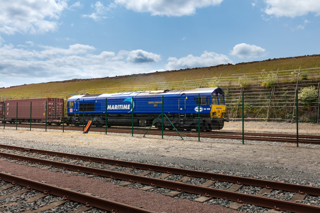
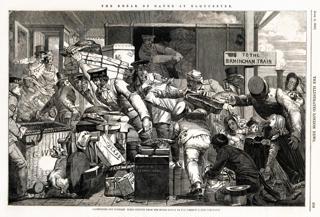
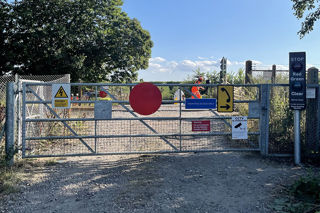
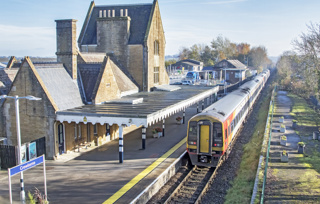


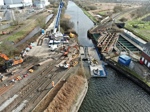







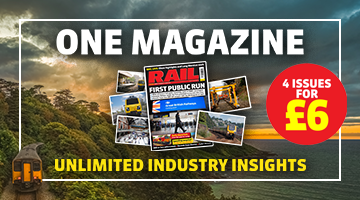

Login to comment
Comments
No comments have been made yet.